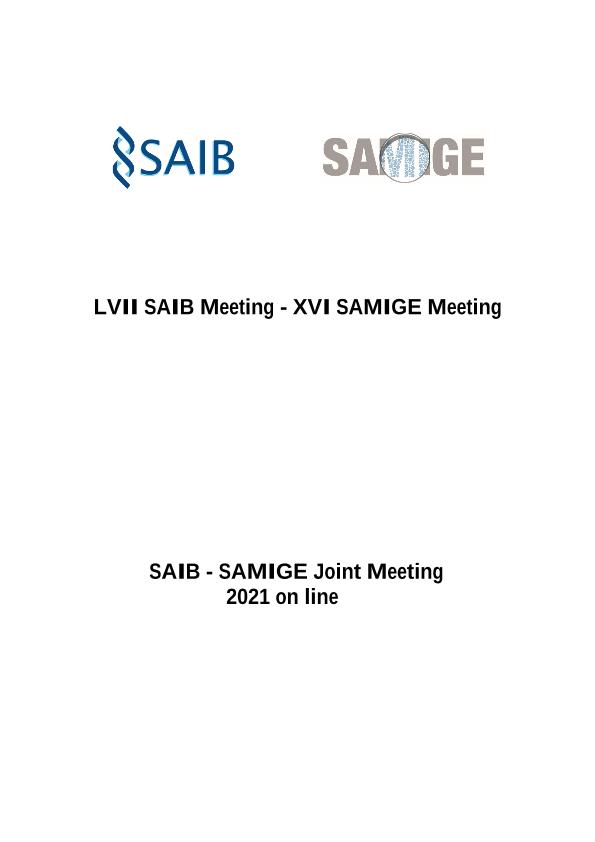Mostrar el registro sencillo del ítem
dc.contributor.author
del Gobbo, Luciana Melisa

dc.contributor.author
Colin, Veronica Leticia

dc.date.available
2022-11-08T11:25:18Z
dc.date.issued
2021
dc.identifier.citation
Aspergillus sp. v1 protein production in vinasse: phytotoxicity evaluation of resultant effluent by germination and root elongation in Lactuca Sativa L.; LVII Annual Meeting of the Argentine Society for Biochemistry and Molecular Biology Research; XVI Annual Meeting of the Argentinean Society for General Microbiology; Argentina; 2021; 1-22
dc.identifier.issn
0327-9545
dc.identifier.uri
http://hdl.handle.net/11336/176797
dc.description.abstract
There is a need to find new ways to manufacture products by reusing nutrients present in materials initially considered as waste. In this sense, vinasse is a liquid acidic effluent with high values of COD (Chemical Oxygen Demand) which result from ethylic alcohol production. Due to its high organic load, there is no conventional treatment capable of reaching the legal standard that allows this effluent release to water bodies. In a prior study, bioconversion of sugarcane vinasse in protein-rich fungal biomass that can be used as an alternative nutrient source to expensive aqua-feeds such as fishmeal and soybean meal was achieved. A filamentous fungus, Aspergillus sp. V1, was used for this purpose. Apergillus sp. V1 was able to grow in vinasse under the following conditions: vinasse (100%) enriched with urea (2 g/L), inoculated with 1×106 spores/mL and incubated at 30°C (150 rpm) for 96 h under sterile conditions. The resulting fungal biomass had a total protein of 41%, within the range required for aquaculture feed (21-55%), and the residual vinasse of this process had a neutral pH and COD reduction of 30%. The objective of the present work was to evaluate the phytotoxicity by seeds germination and root elongation of Lactuca sativa L of: residual vinasse from fungal biomass process (A); pure vinasse (B) and pure vinasse whit urea (2 g/L) (C). Twenty-five L. sativa (var. Crespa Grand Rapidis) seeds were placed on Petri dishes (100 mm) each containing filter paper (Whatman N°3) moistened with 4 mL of vinasses (A, B or C) and tap water as control. Petri dishes were incubated for 120 h in dark at 22±2°C. After this time, the number of germinated seeds was counted and root length was measured. Results were reported as IC50 (concentration at which 50% inhibition occurs) at 95% confidence intervals. The germination and root-growth bioassay enabled assessment of adverse effects of a toxic compound on germination and root growth at early stages of seed development. IC50 values for the germination inhibition bioassay were 31.9, 20.9 and 20.4% (v/v) and for root elongation inhibition bioassay were 23.9, 11.2 and 5.6% (v/v) for A, B and C respectively. Our findings demonstrate that the exposure of L. sativa seeds to vinasse in which Aspergillus sp. V1 were grown (A) produced a less inhibitory effects than the exposure to crude vinasses (B and C) in terms of germination and root development. In addition, pure vinasse with urea (C) presented the highest level of inhibitory effects. With this, we can infer that Aspergillus sp. V1 reduces the phytotoxicity of the effluent. However, additional toxicity tests are required to have a better understanding of vinasses toxicity.
dc.format
application/pdf
dc.language.iso
eng
dc.publisher
Tech Science Press

dc.rights
info:eu-repo/semantics/openAccess
dc.rights.uri
https://creativecommons.org/licenses/by-nc-sa/2.5/ar/
dc.subject
VINASSE
dc.subject
ASPERGILLUS SP. V1
dc.subject
PROTEIN PRODUCTION
dc.subject
LACTUCA SATIVA
dc.subject.classification
Biotecnología Medioambiental

dc.subject.classification
Biotecnología del Medio Ambiente

dc.subject.classification
INGENIERÍAS Y TECNOLOGÍAS

dc.title
Aspergillus sp. v1 protein production in vinasse: phytotoxicity evaluation of resultant effluent by germination and root elongation in Lactuca Sativa L.
dc.type
info:eu-repo/semantics/publishedVersion
dc.type
info:eu-repo/semantics/conferenceObject
dc.type
info:ar-repo/semantics/documento de conferencia
dc.date.updated
2022-11-01T22:29:51Z
dc.journal.pagination
1-22
dc.journal.pais
Argentina

dc.journal.ciudad
Bs. As.
dc.description.fil
Fil: del Gobbo, Luciana Melisa. Consejo Nacional de Investigaciones Científicas y Técnicas. Centro Científico Tecnológico Conicet - Tucumán. Planta Piloto de Procesos Industriales Microbiológicos; Argentina
dc.description.fil
Fil: Colin, Veronica Leticia. Consejo Nacional de Investigaciones Científicas y Técnicas. Centro Científico Tecnológico Conicet - Tucumán. Planta Piloto de Procesos Industriales Microbiológicos; Argentina
dc.relation.alternativeid
info:eu-repo/semantics/altIdentifier/url/https://congresos.g2consultora.com/wp-content/uploads/2021/10/Biocell-Preprint-SAIB-SAMIGE-2021.pdf
dc.conicet.rol
Autor

dc.conicet.rol
Autor

dc.coverage
Internacional
dc.type.subtype
Reunión
dc.description.nombreEvento
LVII Annual Meeting of the Argentine Society for Biochemistry and Molecular Biology Research; XVI Annual Meeting of the Argentinean Society for General Microbiology
dc.date.evento
2021-11-01
dc.description.paisEvento
Argentina

dc.type.publicacion
Journal
dc.description.institucionOrganizadora
Sociedad Argentina de Investigación Bioquímica y Biología Molecular
dc.description.institucionOrganizadora
Asociación Civil de Microbiología General
dc.source.revista
Biocell

dc.type
Reunión
Archivos asociados
